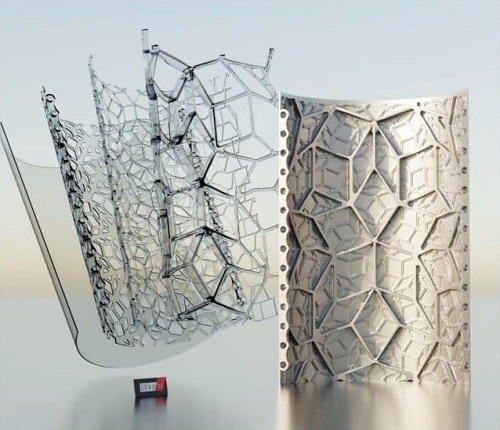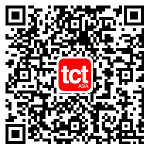



 CN/EN
CN/EN




 CN/EN
CN/EN
Josefine Lissner of LEAP71 just released the new open-source library that allows the creation of aperiodic tilings and quasicrystalline structures for engineering applications. Aperiodic tiles were first used for decorative purposes in the Golden Age of Islam hundreds of years ago.

After their rediscovery by Roger Penrose, they were seen as a mathematical curiosity for a long time, until the discovery of quasicrystals, which earned Dan Shechtman the Nobel Prize for chemistry.
A quasiperiodic crystal, or quasicrystal, is a structure that is ordered but not periodic. A quasicrystalline pattern can continuously fill all available space, but it lacks translational symmetry. While crystals, according to the classical crystallographic restriction theorem, can possess only two-, three-, four-, and six-fold rotational symmetries, the Bragg diffraction pattern of quasicrystals shows sharp peaks with other symmetry orders—for instance, five-fold.
Until the 1980s,quasicrystals were disregarded in favor of the prevailing views about the atomic structure of matter. In 2009, after a dedicated search, a mineralogical finding, icosahedrite, offered evidence for the existence of natural quasicrystals. LEAP71 thinks the properties could be used in aerospace structures, because of their non-repeating nature.
The source code is available as open source to download from the LEAP 71 GitHub along with a detailed explanation of the process.
The library provides a starting point for generating aperiodic tilings such as Penrose Patterns in 2D and Quasi Crystals in 3D. In Generative Design, we are accustomed to lattices, by which we typically mean periodically repeating units with constant intervals. And the same holds true for regular crystalline matter.

However, aperiodicity became popular through the discovery of quasi-ordered structures (“quasi-crystals”) both in theory and in practice and the interesting material properties such a new kind of matter can hold. We proposed aperiodic tilings for engineering applications before, especially those that tend to suffer from vibrational-structural coupling.
This image shows an example of where LEAP71 applied a multi-layered Penrose Pattern to an airframe panel for hypersonic flight. The company theorizes that a pattern with no translational symmetry and non-repeating units should be more resilient to a wide range of frequencies, exhibiting no distinct resonance effect.
At the same time, quasi-crystals and the like are impossible to construct manually and have not seen much practical application despite their promise. LEAP71 published this library to provide a solid starting point, hoping that we will see engineering applications in the future.
Join us at TCT Asia, connect with industry innovators as you explore the entire AM ecosystem including design, materials, hardware, software, post-processing, and quality. 10,000+ professionals will unite to hear about the latest trends, explore the latest immersive AM technologies and find solutions to their AM challenges.

TCT ASIA 2024
Tuesday 7th May 09:00 - 17:30
Wednesday 8th May 09:00 - 17:30
Thursday 9th May 09:00 - 15:00
NECC(Shanghai)7.1&8.1H